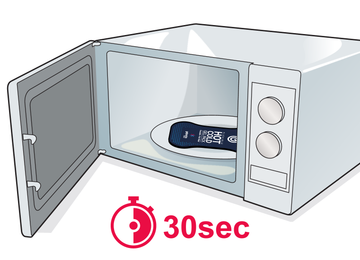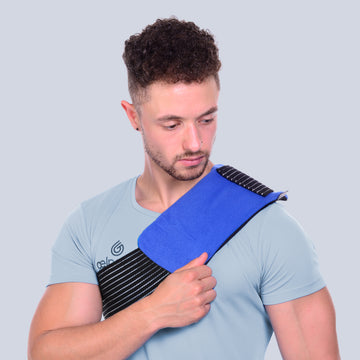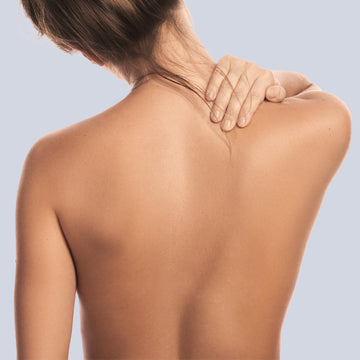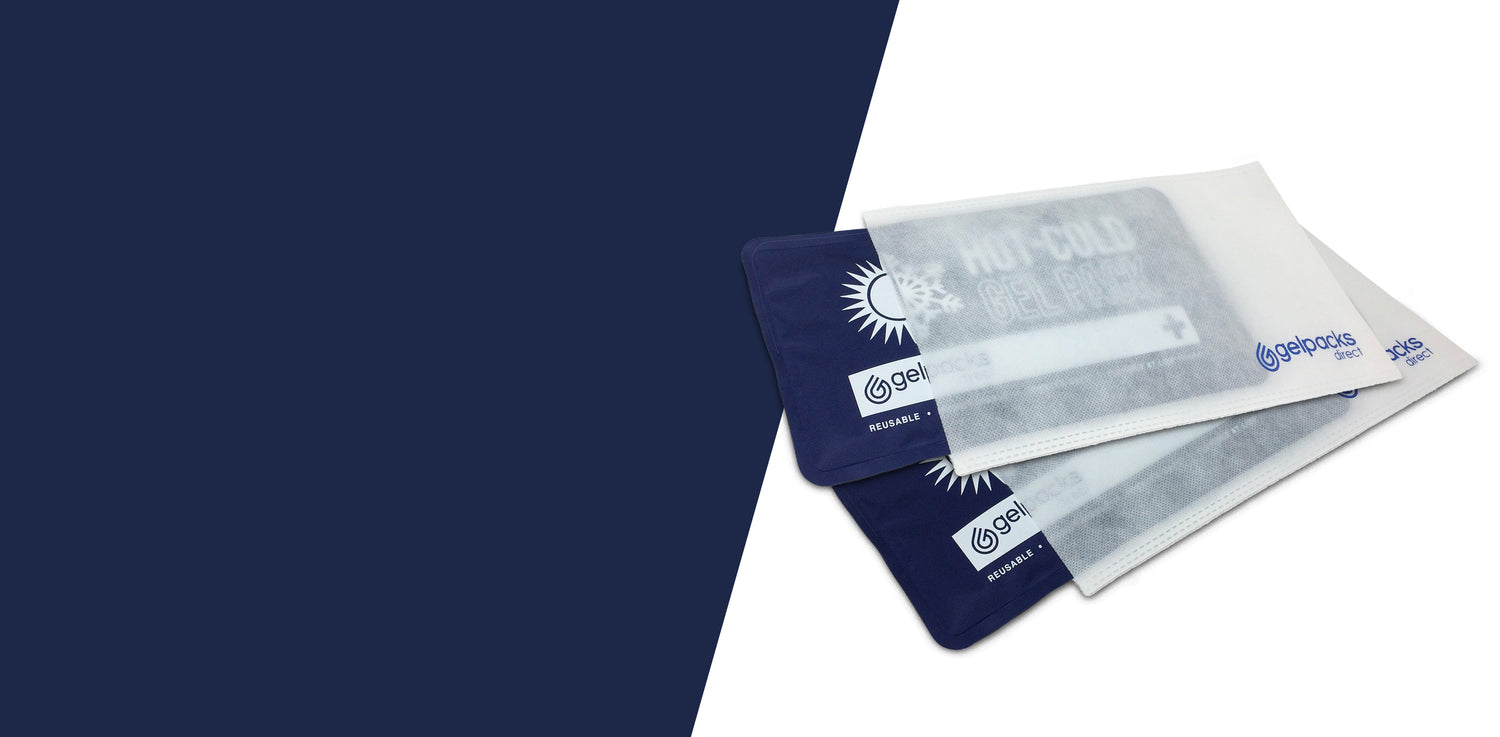How to Use a Gel Pack
If you’re looking for a versatile and effective way to help reduce swelling and pain from an injury, then an ice pack may be just what you need. Ice packs, also known as cold therapy packs, are a simple and easy way to provide relief from injuries. Here we’ll discuss how to use a gel pack for injuries and the benefits of using ice packs for injuries.
Why use gel packs
Benefits of gel packs
The benefits of using ice packs for injuries are numerous. Cold therapy can help reduce swelling, pain, and inflammation, which can speed up the healing process. It can also help numb the affected area and provide temporary relief from discomfort.
- Can be used for hot or cold therapy
- Non-toxic and safe to use on the skin
- Convenient and easy to use
- Can be shaped to fit the body
- Can be reused, making them cost-effective
- Can help to reduce swelling & inflammation
- Can help to reduce muscle spasms & soreness
- Can be used to treat a wide range of injuries
- Can help to reduce pain in the affected area
When to use as gel pack
Cold Use
• Acute Injuries
- • Swelling
- • Strain/Sprain
- • Muscle Pain
- • Acute Injuries
- • Swelling
- • Strain/Sprain
- • Muscle Pain
Hot Use
• Chronic Pain
- • Arthritis
- • Joint Stiffness
- • Relaxation
- • Chronic Pain
- • Arthritis
- • Joint Stiffness
- • Relaxation
Pro Tip:
Alternate hot and cold with Contrast Therapy for amazing results. Read our deep dive here.

When and how long should you ice an injury for?
Ice therapy, also known as cryotherapy, can be a helpful tool for managing inflammation and pain after an injury. However, it’s important to use ice therapy correctly to avoid causing further harm.
"Prolonged icing for more than 30 minutes at a time can actually have a negative impact on the healing process and may cause harm to the skin."
* as per advice from medical professionals
It’s recommended to ice an injury for 20-30 minutes at a time, several times a day, and to take breaks (around 40 minutes) between icing sessions to allow your skin to return to a normal temperature. It’s also important to wrap the ice pack in a towel or cover to avoid direct contact with the skin.
In general, it’s recommended to use ice therapy in the first 24-72 hours after an injury. After this time, it may be more helpful to switch to heat therapy to help promote healing and alleviate muscle stiffness.
How to use a gel pack for injuries
Heat and Ice Wraps
Benefits of using a Hot or Cold Compress Wrap
Using a wrap or protective sleeve with your gel pack can provide several important benefits to help ensure that it is effective and hygienic for use. Some of the key benefits include:
Hygienic
Keep your gel pack hygienic for sharing with family/friends by using a wrap or protective sleeve that can be easily wiped down or washed.
Reduce Leaks
A wrap or sleeve can provide an additional layer of protection to prevent the gel pack from being punctured or leaking.
Insulation
A wrap or sleeve can help to keep the gel pack cold for a longer period, which can be especially useful when using the ice pack in warmer environments.
Extra Protection
The extra layer protects against temperature extremes & prevents burns or skin irritation, especially on sensitive areas or for extended use.
Hands-free Application
Applying your gel pack without hands allows you to continue activities such as typing or watching TV while icing your injury with an elastic wrap.
Compression Therapy
A wrap or sleeve that is worn snugly around the affected area can provide some compression which can help to reduce swelling and inflammation.

How to use a Hot or Cold Compress Wrap
The technique for using a hot or cold compress wrap remains the same, regardless of the type of therapy you're applying. To ensure longevity and ease of use, our compression wraps are machine washable at 30°C, but should never be microwaved as it may harm the elasticity and stickiness of the strap.



To use your hot or cold compress wrap:
1. Insert the gel pack into the fabric cover and secure with the Velcro tab.
2. Place the gel pack directly over the affected area for optimal coverage.
3. Secure the wrap in place by wrapping around the strap and fastening with the hook and loop closure.
4. For smaller limbs, double wrapping the strap can provide additional compression.
5. For larger areas such as the back, torso, or shoulder, wrap once and secure in place.
Adjust the tightness of the strap as needed for desired comfort and compression.
Pro Tip:
For hands-free application secure with an elastic wrap and enhance the cooling/heating affect whilst also getting the benefit of compression therapy.

🫙 Storage Guidelines

Store your gel pack away from direct sunlight in a cool dry place.

Keep away from sharp objects and pets to avoid punctures and leaks.

For cold use, leave the gel pack in freezer. Use a freezer bag (provided) to keep separate from food items.

For hot use, always heat from room temperature. (Keep a spare gel pack for hot use).
✅ Pre-flight Checks
Each time prior to use, you should pay close attention to the following:
1. Ensure that the gel pack is used before its expiration date for maximum therapeutic benefit.
2. Clean the gel pack with a damp cloth after each use to remove oil or grease that may cause damage during heating.
3. Inspect the gel pack before each use for any signs of damage and contact us if you have any concerns.
4. Cease use immediately if the gel pack is leaking or split.
🧊 Cold Therapy - How to use an ice pack or cold compress
Cooling instructions
1. Place the gel pack in the freezer for minimum 2 hours.
2. For milder cooling you can place in the fridge.



Cold Application
1. Always touch-test the gel pack on the inside of your wrist before applying.
2. If too cold, then allow to cool try putting it in the sleeve/wrap and re-test.
3. Apply the cold pack to the injured area for 20-30 minutes.
4. Remove from the skin for at least 40 minutes before re-applying.
5. Repeat several times a day as needed.
Pro Tip: Our proprietary gel packs can live in the freezer overnight and will always remain soft and flexible when frozen.
🔥 Heat Therapy - How to use a heat pack or hot compress
Heating Warnings
! Place on a clean plate free from grease/oil.
! Place on the microwave turntable and ensure that it is free to revolve.
! Watch the gel pack in the microwave to make sure it is not expanding too much to prevent leakage or bursting.
! Don’t heat in a traditional convection oven.
! Don’t heat a frozen pack. Always allow to thaw to room temperature first or even better have a spare gel pack for hot only use.
! You can heat in hot water.
! DO NOT OVERHEAT as it will (i) cause gel pack to split or (ii) reduce the lifespan.
! Don’t exceed 2 minutes total heating time.
Heating Instructions - Microwave
1. Heat for 30 seconds on full power.
2. Remove from microwave and massage the gel to spread the heat evenly.
3. Repeat heating in 15 second increments + massaging until desired temperature is reached.
Heating Instructions - Hot Water
1. Boil water in a kettle or pan.
2. Submerge your gel pack into the hot water for 10-15 minutes.
3. Remove carefully using tongs and test temperature.
4. Continue heating until desired temperature is reached.



Hot Application
1. Always touch test the gel pack on inside of your wrist before applying
2. If too hot, then allow to cool try putting it in the sleeve/wrap and re-test
3. Apply the heat pack to the injured area for 20-30 minutes
4. Remove from the skin for at least 40 minutes before re-applying
5. Repeat several times a day as needed
🚨 Warning: Care Instructions
- Wipe the gel pack with a clean damp cloth after each use to ensure to remove grease or oils that can cause ‘hot spots’ resulting in your gel pack leaking during heating.
- Store the gel pack out of direct sunlight, in a cool dry place. Sunlight will age and weaken the gel pack.
- Place inside a freezer bag (provided) to keep separate from your food items.
- It is important to avoid applying gel pack for too long, as this can cause tissue damage.
- Avoid applying the gel pack directly to skin as this can cause frostbite/burns.
- For comfort and safety use a protective sleeve, cover, or cloth between the skin and gel pack.
- It is important to avoid applying gel pack for too long, as this can cause tissue damage.
- Avoid applying the gel pack directly to skin as this can cause frostbite/burns.
- For comfort and safety use a protective sleeve, cover, or cloth between the skin and gel pack.
- For external use only.
- Don’t sit on or fall asleep on your gel pack.
- Don’t allow children to use unsupervised.
🚫 When not to use a gel pack
There are certain health conditions for which it is not recommended to use a gel pack. Some examples of these conditions include:
Sensitive skin: If you have sensitive skin, it is important to be careful when using a gel pack, as it can cause irritation or burns if left on the skin for too long.
Circulatory problems: If you have circulatory problems or conditions that affect blood flow, such as Raynaud’s disease or diabetes, it is important to be cautious when using a gel pack, as it can affect blood flow to the affected area.
Allergic reactions: If you are allergic to the materials used in the gel pack, it is important to avoid using it to prevent an allergic reaction.
Open wounds: It is generally not recommended to use a gel pack on an open wound, as it can cause further irritation or delay healing.
Frozen shoulder: If you have a frozen shoulder, it is generally not recommended to use a cold gel pack, as it can cause further stiffness and pain.
It is important to consult with a healthcare professional before using a gel pack, particularly if you have any underlying health conditions or concerns.
❓ FAQs
How to Use a Gel Pack | Hot and Cold Pack Instructions
What if I don’t have a microwave oven? Can I use boiling hot water?
Answer
How long should I heat my gel pack for?
Answer
Why is my gel pack not getting hot enough or staying hot for long?
Answer
How long do they stay hot or cold?
Answer
Can the gel pack live in the freezer?
Answer
How long will the gel packs last?
Answer
What if my gel pack has burst?
Answer
Please find our full FAQs here
⚕️ Medical Advice
The information provided on this website is for informational purposes only and is not intended to be a substitute for professional medical advice, diagnosis, or treatment. Always seek the advice of your physician or other qualified healthcare provider with any questions you may have regarding a medical condition. Do not disregard professional medical advice or delay seeking treatment because of something you have read on this website.
We are not responsible for any errors or omissions in the information provided on this website or for any actions taken based on the information provided. The use of this website does not create a doctor-patient relationship.
Please consult a licensed healthcare professional for specific medical advice, diagnosis, and treatment.
Download the PDF version of this guide here
Need more help?
If you have any other questions, then please do not hesitate to get in touch. We are here to help!





















